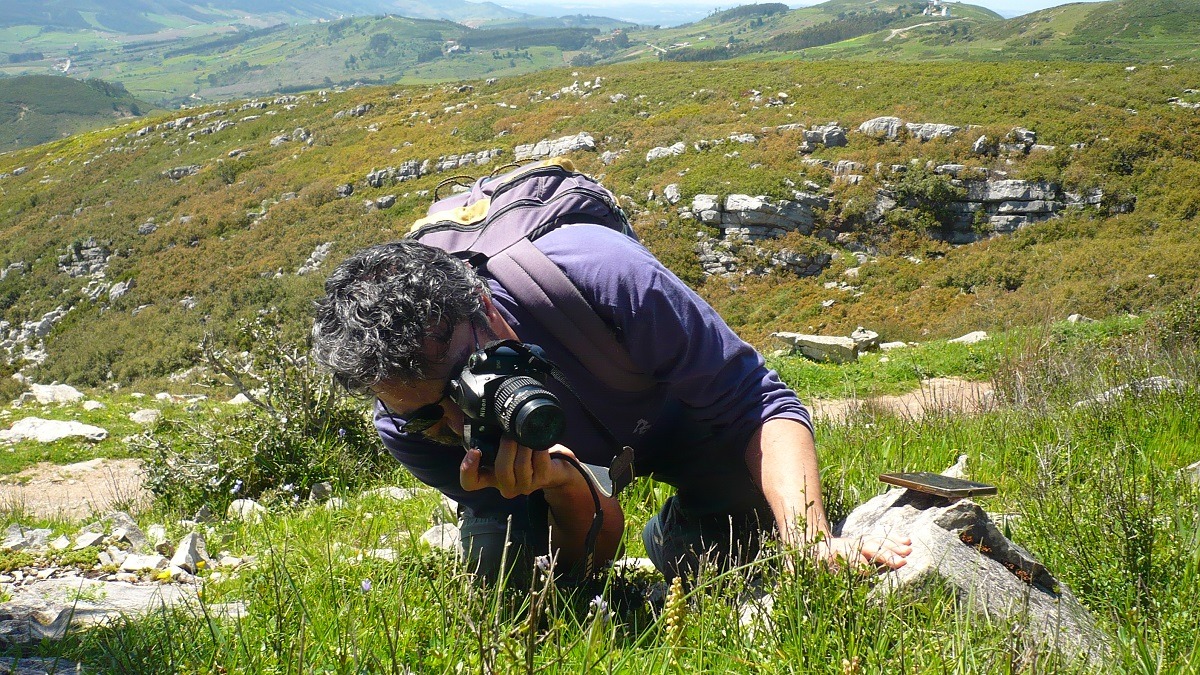Observation of the Week, 6/2/18

Our Observation of the Week is this group of cockroaches, seen in Mozambique by @ldacosta!
As a child, Luis da Costa said he “wanted to ‘treat’ animals, mostly big magic mammals like tigers, lions, or elephants - as a lot of children I guess, I wanted to be a vet. But later, still young boy, I realised that I preferred to study ALL animals to get a global overview and to understand their connections.” Eventually he got into bird watching and and finally fish. “I am currently focusing my research on taxonomy & systematics of freshwater fishes (mostly southern African and south-western European species). But still believing that my work will help to protect them by helping to refine their conservation status.”
And it was while walking to a pond in Mozambique that he noticed the group of cockroaches you see above. However, neither fish nor cockroaches were the organisms they were looking for while on that trail… “We (team members and rangers) were mostly listening all noises around us to be "ready" if an elephant appeared on the path and decided to use it as an escape way,” recalls Luis. “We saw several dungs, so they were around.
Of course, while walking we observed everything (flora, insects, birds, mammals). And I saw these cockroaches!!! They were resting on the tree about chest height. Quite an amazing circle, and more amazing was when they moved by circle everytime I approached my hand to their position. But they never run away. After 2-3 minutes I left them alone. In the way back they were gone!!!
Cockroaches, along with termites, are members of the insect order Blattodea. Termites, of course, famously live in colonies and demonstrate eusocial behavior. Cockroaches don’t have such complex social lives but they do posssess aggregation behaviors, especially when younger. I reached out to Eddie Dunbar (@eddiebug) of the Insect Sciences Museum of California for any insight he might have into the behavior shown in Luis’s observation, and he told me that they were likely hatchlings, using pheremones to regulate their behavior:
The aggregation probably at one time mimicked a poisonous plant. There's a lot of mimics mimicking a model that has gone extinct...I think the photograph depicts aggregation behavior not uncommon with many arthropods. Spider hatchlings in the genus Araneus form a ball and disperse over time.
Because they are considered pests, German cockroaches are a cockroach species that has been extensively studied, and Eddie pointed me to this paper, which describes their “pre-social” aggregation behavior and the efforts of scientists to create robots which mimic said behavior - very cool!

“I always registered my observations in a spreadsheet. Not really fun though,” says Luis (above, photographing an Orchis anthropophora. With the growth of citizen science platforms such as iNaturalist, he’s begun to post his findings online and says he uses iNat as a “public spreadsheet” for his casual bird observations, which he can then check from anywhere. He explains,
I really enjoy to share my photos and I look forward for iNaturalist community identification. I think the key word is "to share" with the community and not to keep these observations for myself or in the drawer.
- by Tony Iwane.
- iNat user @luisguillermog found a similar array of caterpillars in Mexico, which was our Observation of the Week for August 18, 2017.
- Eddie shared this video with me, which depicts termites following lines drawn in ballpoint pen ink. The ink is similar to their pheremones.
- While most people think of cockroaches as pests, note that only four species (of over 4,500) are considered to be major pests for humans.
- “Milk” from a certain species of cockroach has been found to be incredibly packed with nutrients.





Comentários
Adicionar um Comentário